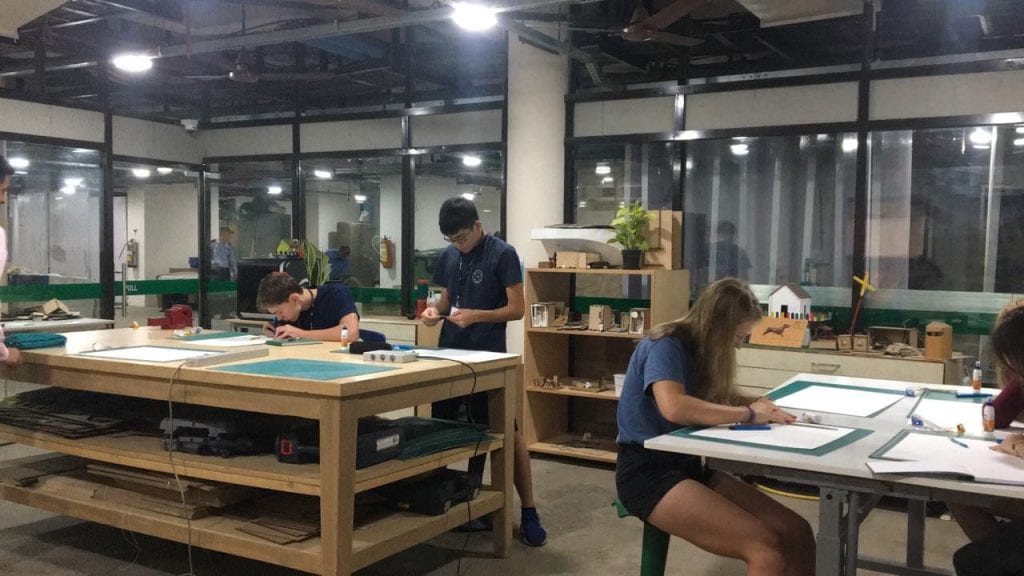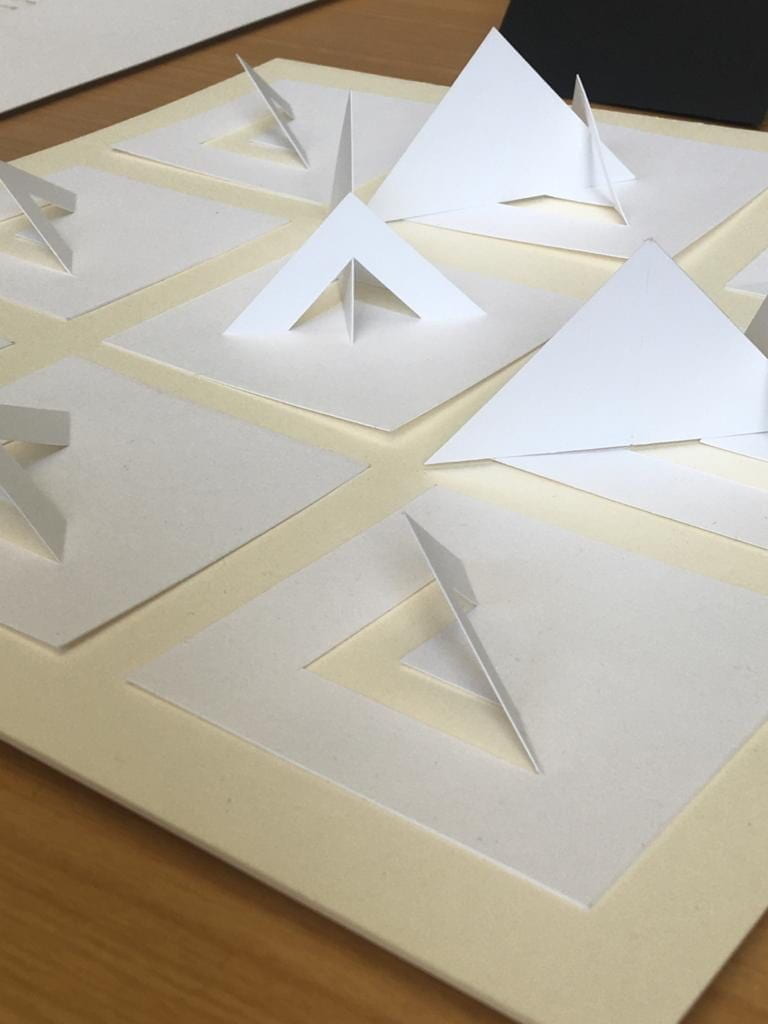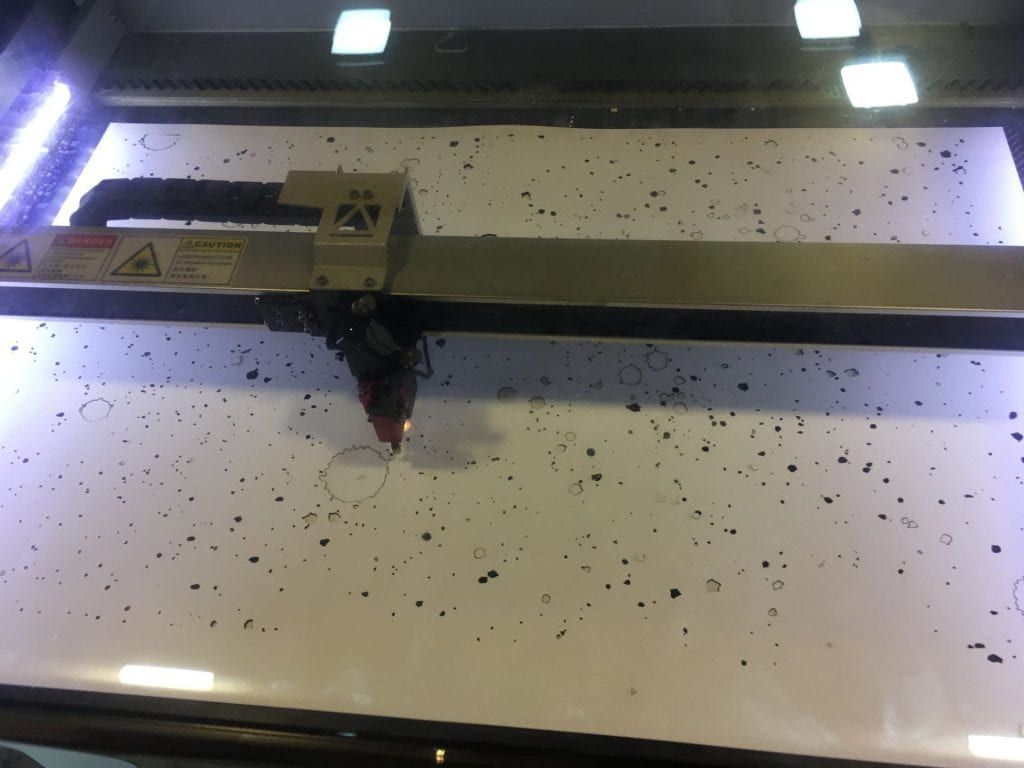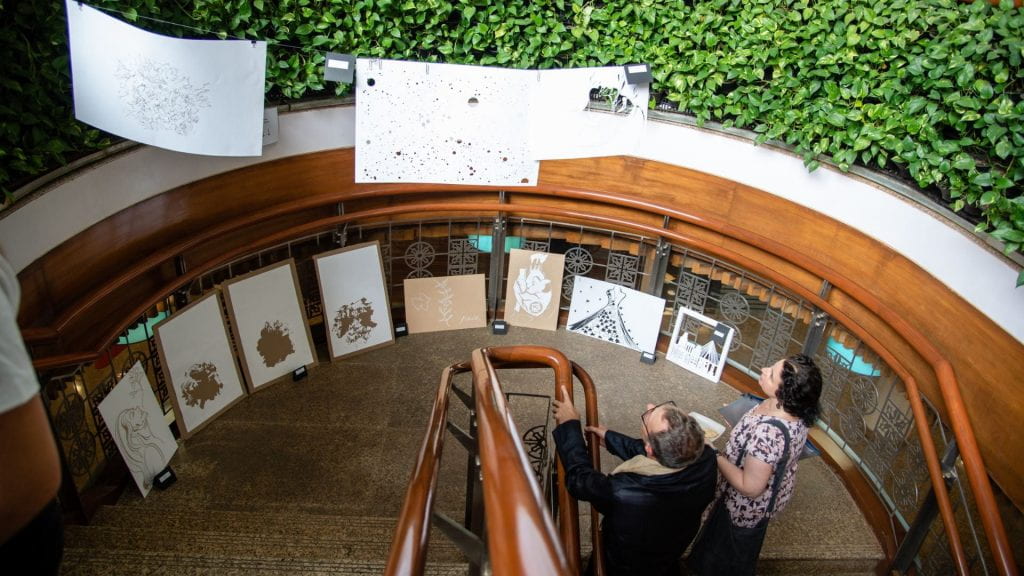SAISA Art was an amazing opportunity where four other Higher Level IBDP Visual Arts students and I traveled to Mumbai, India to work with students from international schools in India, Nepal, Oman, Jordan, and Bangladesh in workshops led by visiting artists. The theme of the event was Zero Hour, therefore, we had to create art pieces connecting to the environment and the climate crisis, an important global issue. Before going on the trip we were given four different possible workshops we could choose from: Mixed Media, Paper Arts, Painting, and Photography. I chose the Paper Arts workshop because I wanted to explore a completely new media.

OSC’s SAISA art students at ASB. (Ms. Ali)
Day 1
Iris and I walked with our host family from their apartment down the street to ASB (American School of Bombay). The day started with an introduction to the theme of Zero Hour. Two young activists from Mumbai explained how industrial development projects threaten the Aarey Forest in the northern suburbs of Mumbai and the Warli people living there. In order to raise awareness about the issue, activist Prakash Bhoir and The Aarey Collective collaborated with the Indian Hip-hop band Swadesi to create a song called The Warli Revolt.

Young activists explaining their use of the arts in raising awareness for the Aarey Forest (ASB Photographer)
We then spent the first day of SAISA Art visiting art galleries in South Mumbai. My favorite exhibitions we saw were Vishwa Shrof’s “Folly Measures” in the TARQ gallery and Manisha Parekh’s “A River Inside” in Jhaveri Contemporary. The experience of visiting the galleries provided me with inspiration for works to create during the SAISA Art workshops as well as future pieces for my IBDP Art exhibition next year.

The view of the Gate of India from Jhaveri Contemporary.
Day 2
On the second day of SAISA Art, we met our workshop artists and started experimenting with the new media. The artist for the Paper Arts workshop was Sachin Tekade. In order to start the process of creating our artwork, we started by exploring how to use a simple square piece of paper to create amazing artwork. Sachin showed us a couple of possibilities and we attempted those in order to practice the meticulous skills needed for this art form. He then encouraged us to find new creative ways to use a simple paper square or cube. I created my first work.

Takuro, Jack and I working on out paper cut artworks. (Ms. Ali)

My first paper cut artwork. (Ms. Ali)
At the end of the day, the visiting artists took part in an artists panel, where they discussed their processes and their advice for us as artists.
Day 3
On day three the EdTech Coordinator at ASB, Alex, introduced us to the laser cutter and taught us how to use it and how to use Adobe Capture. Inspired by Manisha Parekh’s “Ripple” from the exhibition “A River Inside” at Jhaveri Contemporary, I splattered black ink on to paper and then took photos of the paper. I then used Adobe Capture to create vectors of the photos which I then sent to the laser cutter to cut out the organic shapes created by the ink splatters.

The laser cutting out the vectors I created.
We also had the opportunity to explore using Virtual Reality to create 3D artwork, which Iris and I spent some time trying out the amazing new experience during a break.
We then set up for the exhibition to show the people in different workshops the artwork we created over the past two days. Additionally, we were able to watch the SAISA Music performance with the same theme of Zero Hour. It was very interesting to see how the SAISA musicians explored the same important global issue through music.

The paper arts workshop exhibition. (ASB Photographer)
SAISA Art allowed me to grow as an artist and as a person, I was able to undertake the challenge of trying a completely new art medium, which helped me develop new skills and learn how to use new technology to create art. Throughout SAISA Art I worked collaboratively with my fellow artists, art teachers, and the visiting professional artists to receive feedback on my art pieces and how I could improve it, as well as give feedback to my peers on their artwork. The exchange of constructive criticism was very helpful in improving all our processes and our final artwork as well as helping me identify my strengths and areas for growth in both the physical skills and the creative thought and planning processes to create art. In addition, I was was able to meet many different people from all over the world who all had a shared interest in art.

SAISA Artists (ASB Photographer)

ilockwood March 23, 2020
Alex,
This is a good post and I appreciate seeing all that you accomplished on the SAISA art exchange. Mumbai/Bombay has such a rich art scene-you and the team were lucky to be able to dip in and out of it! I’ve visited many of the galleries and also showed an exhibition of black & white photographs in 2001 at the BNHS. The Aarey Forest connection is interesting and I’m glad the program supported its important cause. Well done with this post!